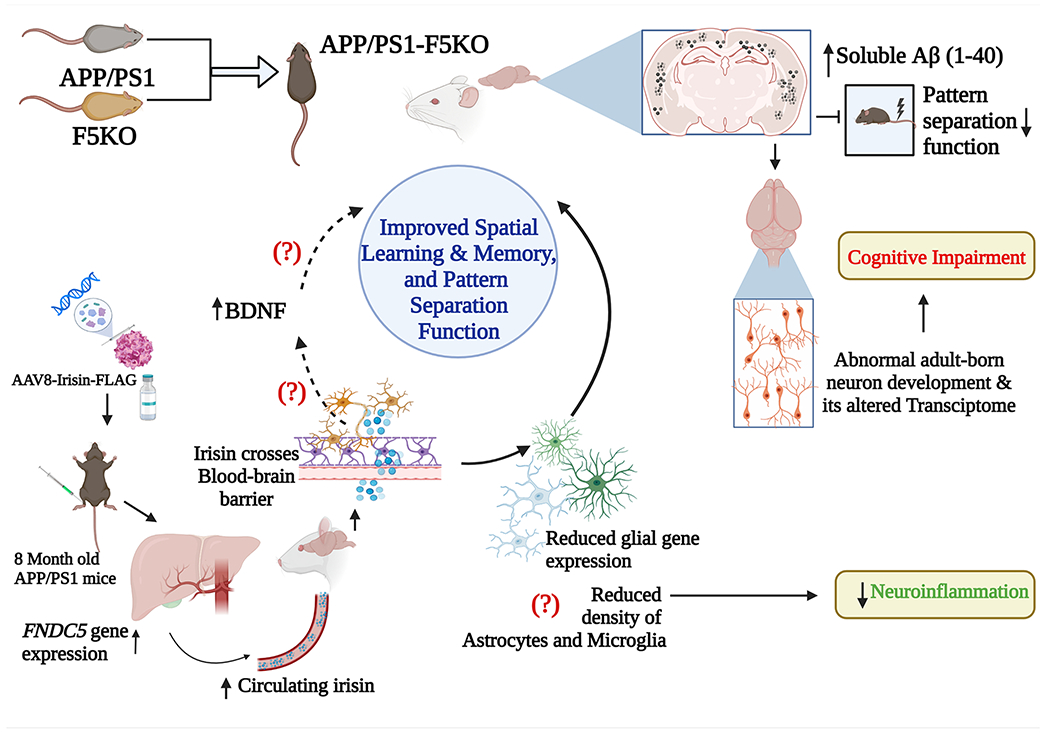Fig. 2.

A schematic showing the effects of global KO of FNDC5 in APP/PS1 mice (a model of AD) and the potential mechanisms by which peripheral irisin treatment could improve cognitive function in AD mice. Breeding of AD mouse (APP/PS1) with FNDC5 gene knock-out (F5KO) mouse produced an AD mouse model with F5KO (APP/PS1-F5KO). Such mice displayed impaired pattern separation function and increased soluble amyloid-beta (Aβ 1–40) concentration, and abnormal development of adult born neurons with altered transcriptome. On the other hand, intravenous administration of AAV8-irisin-FLAG in APP/PS1 mice increased FNDC5 overexpression in the liver, which increased irisin release into the circulating blood. Peripheral irisin enters the brain by crossing the blood-brain barrier, modulating glial cell gene expression, and possibly reducing the numbers of reactive astrocytes and activated microglia, the perpetrators of chronic neuroinflammation. Such antiinflammatory effects likely improved cognitive function in AAV8-irisin-FLAG treated APP/PS1 mice. Irisin also potentially increased BDNF concentration in the brain, which likely also contributed to improved cognitive function in APP/PS1 mice. AAV: Adeno-associated virus; Aβ: amyloid-beta; BDNF: brain-derived neurotrophic factor; F5KO: fibronectin type III domain containing 5 gene knock-out.
